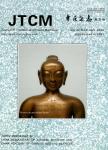Evaluation of peripheral perfusion in term newborns before and after Yintang (EX-HN 3) massage
Evaluation of peripheral perfusion in term newborns before and after Yintang (EX-HN 3) massage作者机构:Department of PediatricsDivision of NeonatologyBaskent University Faculty of MedicineAnkara Hospital Department of PhysiologyBaskent University Faculty of Medicine Department of PediatricsDivision of NeonatologyGaziosmanpasa University Hospital
出 版 物:《Journal of Traditional Chinese Medicine》 (中医杂志(英文版))
年 卷 期:2015年第35卷第6期
页 面:642-645页
核心收录:
学科分类:1005[医学-中医学] 100512[医学-针灸推拿学] 10[医学]
主 题:Acupressure Point EX HN3 (Yintang) Perfusion Term birth Infant, newborn
摘 要:OBJECTIVE: To identify how acupressure on the acupoint Yintang(EX-HN 3) impacts oxygen saturation, pulse rate, and peripheral perfusion in term-born infants without underlying ***: Infants born between weeks 37 and 42 of gestation were included in this study. The polyclinic s neonatology room was noise-controlled and made half-dark to prevent the perfusion index from being confounded. A pulse oximeter was linked to the baby s left lower extremity. Acupressure was applied on Yintang(EX-HN 3) for 30 s clockwise, held for 30 s, and then acupressure was applied for another 30 s counterclockwise. The baby s SaO_2, pulse rate, and perfusion index were recorded for each minute before and after ***: When pre- and post-acupressure pulse rate values were compared, a significant decrease in pulse rate values after acupressure application was observed. When pre- and post-acupressure oxygen saturation values were compared, a significant increase in post-acupressure oxygen saturation was observed. In addition, peripheral perfusion increased significantly after ***: Acupressure application has been used in traditional medicine for many years. However, it is not yet widely used in modern *** study shows the impact of acupressure on neonatal skin perfusion, oxygen saturation, and pulse rate.



